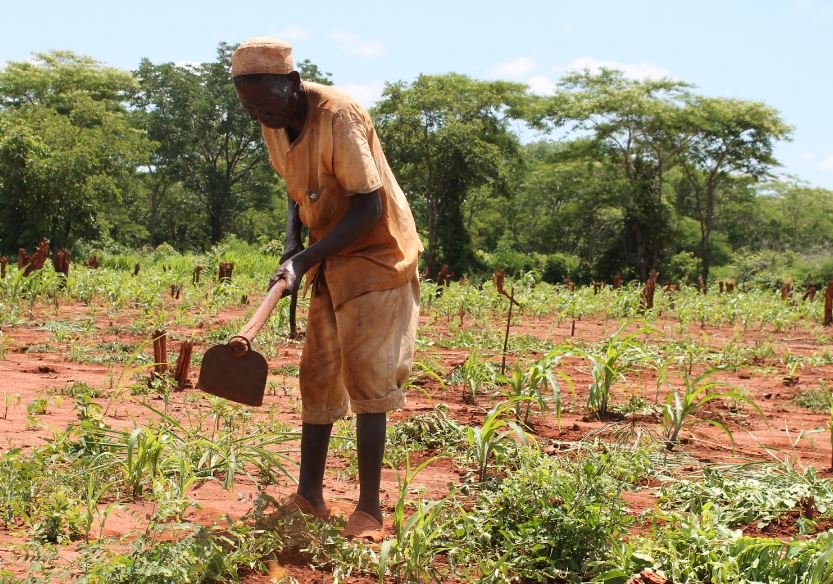
Despite Tanzania’s vision on agricultural self reliance, the sector which accounts for more than 30% of the GDP and employs about 67% of labor force, still faces significant challenges, FikraPevu can report.
Among the challenges, according to experts, are poor farming practices compounded by lack of modern skills to farmers, unavailability of modern implements, and markets.
In a country where the economy largely depends on agriculture for both food and income, for many years these challenges have been hindering agricultural development regardless of the many programmes introduced by the government which most of the time remain in papers.
The government’s establishment of the National Agricultural Input Voucher Scheme (NAIVS) in response to sharp rise in global grain and fertilizer prices way back in 2007/08 had a little success as farmers were able to cultivate enough pieces of land.
This scheme mobilized funds from both local and international organizations to the agricultural sector in order to preserve Tanzania’s household and national food security.
Before the initiatives to expand the agricultural sector were set in place, most farmers depended on their own resources for all farming activities. This meant the farmers used poor quality equipments, seeds and even irrigation methods.
However, the now unpretentious funds in the agricultural sector have led to a reduction of agricultural subsidies.
Unfortunately, less than 10% of the Tanzanian budget is allocated to funding the agricultural sector, while emphasis is placed on sectors like construction,
If more than 10% of the Tanzanian budget was allocated to the agricultural sector, there would be more subsidies and also advanced methods of farming.
In the 2007/08 budget 22.4 billion Tanzanian shillings was set aside for the agricultural ministry out of the 6.07 trillion. Although this was significantly less than 10%, the amount tripled in 2016/17 whereby 116 billion was set aside from 29.5 trillion Tanzanian shillings.
Interestingly, the increase did not mark a rise in agricultural subsidies provision.
However, FikraPevu believe that, despite the recent underfunding of the agricultural sector through subsides, there have been other efforts to support the agricultural sector.
Some past initiatives that were implemented to boost agriculture include: Siasa ni Kilimo (1972), Demonstration plots (Mashamba ya Mfano) and Farmers’ Organization (Ujamaa).
Kilimo Kwanza (Agriculture First) is an example of recent agricultural initiatives taken to by the government to modernize and commercialize agriculture.
Kilimo Kwanza was bad-mouthed since its implementation and so its failure did not come as a surprise to many. It was criticized for not emphasizing on the farmers, poor agricultural environment and for not involving the extension officers in the process.
Past agricultural initiatives all focused on manipulating agricultural property rights to either transfer technology of improve farmers’ access to credit extension services. Initially, farms were nationalized but after the initiative proved ineffective farms where owned by individuals again.
Apart from poor funding, the agricultural sector also suffers from the poor weather conditions. Tanzania is no exemption to the unfavorable climatic changes going on all over the world.
This year, Tanzania has faced some of the driest seasons which were later followed by some of the fiercest rains. These unexpected changes in weather has not only led to severe loss of food and property, but also increased the food prices.
Since most farmers depend on seasonal rains, the floods that came right before cultivation phase this year at a time destroyed most of the produce, leaving farmers with almost nothing.
If farming was done throughout the year, the effects of the floods would not have caused the significant loss of food and rise of food prices.
The main affected regions with floods this year are: Arusha, Dodoma, Mara, Mwanza, Morogoro and Shinyanga. These are also some of the regions that grow the most economically important crops in Tanzania which are: maize, cassava, rice, sorghum and millet.
The main disadvantage of floods is that they live the soil barren since the top layer is carried away. Interestingly, nevertheless, floods could have an advantage. A good example is seen in Egypt, where annual floods in Nile have left the plains of Egypt one of the most fertile lands in the world.
Unfortunately this isn’t the case in Tanzania.
A rapid assessment report by the Ministry of Agriculture, Livestock and Fisheries has disclosed a significant decrease in crop yield since October 2015. The main staple crops such as rice, maize, cassava, sorghum and millet have decreased by approximately 41%, 57%, 30%, 58% and 38% respectively. This decrease in yield reflects an upcoming shortage of food, and so staple food prices are expected to be higher than they already are.
It can be said that the agricultural sector is not receiving as much attention since the discovery of gas. The Tanzanian government should look out for the resource curse which normally undermines the importance of non-resource sector (mostly agriculture in Africa) and praises energy sector, like it happened in Nigeria.
